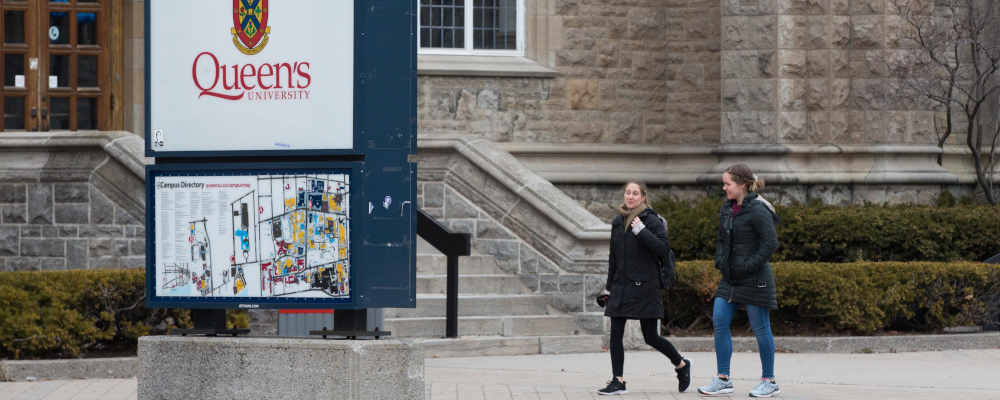- Queen's University has announced it would have to make millions in cuts to stay open. Other universities across Canada, also staring down budget deficits, are having to take similar drastic measures.
- Universities are increasingly reliant on international students, who often pay five times more in tuition than domestic students. A 2022 Ontario Auditor General's report found that from 2017 to 2021, international students went from paying 29 percent of all tuition paid to universities to 45 percent.
- The financial implications of a just announced (following this article's publication) federal cap on student visas for two years could be monumental for Canadian universities. It risks exposing the extent to which they are increasingly relying on international students to obscure their underlying financial challenges.
- The Trudeau government is hoping to reduce the number of undergraduate study permits by 35 percent from 2023.
This month, Queen’s University’s leadership informed its faculty and staff that the university must make drastic cuts to ensure that it can remain open. The brunt of the cuts will likely affect the Faculty of Arts and Science and include slashing courses, not replacing faculty, delaying renovations, and reducing the number of teaching assistants. Reports of these imminent cuts follow an announcement last summer that the university was running a $62 million budget deficit, now sitting around $48 million.
While the situation at Queen’s may be the most high-profile budget crisis, other universities across Canada are staring down massive financial pains. These developments reflect deep structural issues facing the sector, including caps on tuition rates, tuition freezes, COVID-19 recovery, flat-lined public expenditures on universities, and declining enrolment in certain academic programs.
Many Canadian universities have sought to mitigate these challenges by increasing their enrollment of international students. According to post-secondary experts, it’s not an exaggeration to say that international students are increasingly keeping many of Canada’s universities afloat, especially in Ontario.
Alex Usher, president of Higher Education Strategy Associates, who specializes in post-secondary education, notes that in today’s policy environment, without international students making up at least 20 percent of the student body, no Ontario university can operate properly.
“I can almost guarantee you that every single one of [the universities with a budget deficit] has fewer than 20 percent international students. And all the ones that are in surplus, it’s because they’ve got more than 20 percent,” the former director of the Educational Policy Institute Canada insists.
Yet as previous Hub reporting has documented, growing public concerns about the massive rise of international students and its effects on housing costs have resulted in significant political pressure on the federal and provincial governments to limit the number of student visas.
At the end of 2023, the Trudeau government confirmed to the Globe & Mail that the number of study permit holders in Canada has surpassed one million, with just over half of them in Ontario; beating the government’s own forecasts. The top two source countries are India and China.
Federal Immigration Minister Marc Miler has signalled that a new cap on study permits for international students could be forthcoming, even going as far as to say the international student system has “gotten out of control”.
For universities, this valuable source of revenue could be in jeopardy.
Given that these international students are responsible for nearly half of all tuition fees paid to universities in Ontario, the financial implications for Canada’s universities could be monumental.
It risks exposing the extent to which the sector is increasingly relying on rising numbers of international students to obscure their underlying systemic financial challenges.
The humanities: ground zero of financial unsustainability
These challenges are most acute in the humanities. Since the 2008 Great Recession, most humanities departments across Canada have seen enrolment decline and faculties shrink.
In 2014, former Harvard president Drew G. Faust argued that economic anxieties were driving students away from the humanities and towards other more profitable areas of study, such as business.
The appeal of specialized programs as a path to well-paid employment after graduation has played a role in the budget crunches affecting humanities at many universities. This is especially true given that a significant number of international students—who pay much higher tuition fees (as much as five times more than domestic students) that fill the schools’ coffers—are themselves moving away from the humanities as an area of study.
Last year, Usher and his team found that the humanities were the least popular choice for international students, followed by the social sciences. Health, engineering, and science were the three most popular fields of study.
This is consistent with Statistics Canada data from 2016, which shows that just 8 percent of international students chose to study the humanities. The two most popular fields for international students were business, management, and public administration, chosen by 27 percent, and architecture, engineering, and “related technologies,” selected by 19 percent.
Limited options for budget shortfalls
As a result of all these structural challenges, Queen’s and other universities across the country are running budget deficits.
In the past, when faced with such budget shortfalls, universities would often take a wait-and-see approach, eyeing the government for financial support.
“Universities really worked on a sort of brinksmanship approach to funding where if things get bad, they assumed that the government would eventually come around,” says Ken Coates, the chair of Yukon University’s Bachelor of Arts in Indigenous Governance program. Coates studies post-secondary schools and is the author of the book Dream Factories: Why Universities Won’t Solve the Youth Jobs Crisis.
But this time around, that’s not happening, especially in Ontario, which is home to the greatest share of Canadian universities. Across successive governments, the Ontario government has consistently been among the lowest in the country when it comes to institutional funding for universities. Current provincial grants have been frozen in nominal terms. In 2019, the Ford government lowered tuition fees by 10 percent and then froze them. They have remained unchanged since. Provincial policy, in other words, is contributing to the problem.

Amid this Ontario-wide funding crunch, the Ford government has told the universities to find “efficiencies” where they can, forcing schools, Coates says, into making some difficult decisions.
“The only thing you can really cut back on in any substantial way is university faculty. And you can cut back on support services,” he admits.
Coates notes across Canada there has been a quiet reduction of staff in humanities departments over the last 15 years, particularly in history.
“The history enrolments have dropped, and so you get a history professor who retires, and you just don’t fill the job,” he explains. “It doesn’t show up as a cutback, although in a practical sense, in the power of the history department, it is a real cutback.”
An increasing reliance on international students
Flat or even declining public funding and constraints on domestic tuition revenues have pushed universities in the direction of international students as a growing revenue source.
A 2022 Ontario Auditor General’s report found that from 2017 to 2021, international students went from making up 13 percent of enrolment to 17 percent of enrolment at the province’s universities.
During this same period, international students went from paying 29 percent of all tuition paid to universities to a staggering 45 percent.
At struggling Queen’s, international students make up about 11 percent of the undergraduate student body. Similarly, Sir Wilfrid Laurier University, with only 6 percent international students, is projected to have a deficit of $1.9 million for the 2023/24 fiscal year.
In contrast, the University of Toronto, with more than 25 percent international students, is projected to continue to have a balanced budget in 2023/24. The University of British Columbia, which reported that 27 percent of their undergraduate students were international, will also have a balanced budget.
Last year, former Hub editor-in-chief Stuart Thomson reported that across Canada international students had grown by 31 percent from 2021 to 2022. He also noted a 40 percent rise in international students at Cape Breton University.

Government-appointed panel recommends higher tuition
If the growth in the number of international students has been treated as a short-term solution to the challenges facing Canadian universities, a federal cap on students may expose how structural these issues have become for the sector.
A recent report by a blue-ribbon panel appointed by the Ontario government signaled the need for more serious reform.
The panel identified several key problems facing universities and colleges including financial instability, an insufficient share of government funding for universities, and over-dependence on international students for revenue.
Their set of recommendations includes a 10 percent boost in provincial operating grants and greater accountability and financial literacy for university board members.
But perhaps the most controversial is a five percent hike in tuition, followed by subsequent years of increases.
The report stated that due to higher rates of inflation over the last three years, Ontario’s domestic tuition freeze was posing a serious financial risk to the province’s post-secondary schools.
“As time goes on, this situation is ever more likely to pose a significant threat to the financial sustainability of a major part of the province’s postsecondary sector,” read the report.




